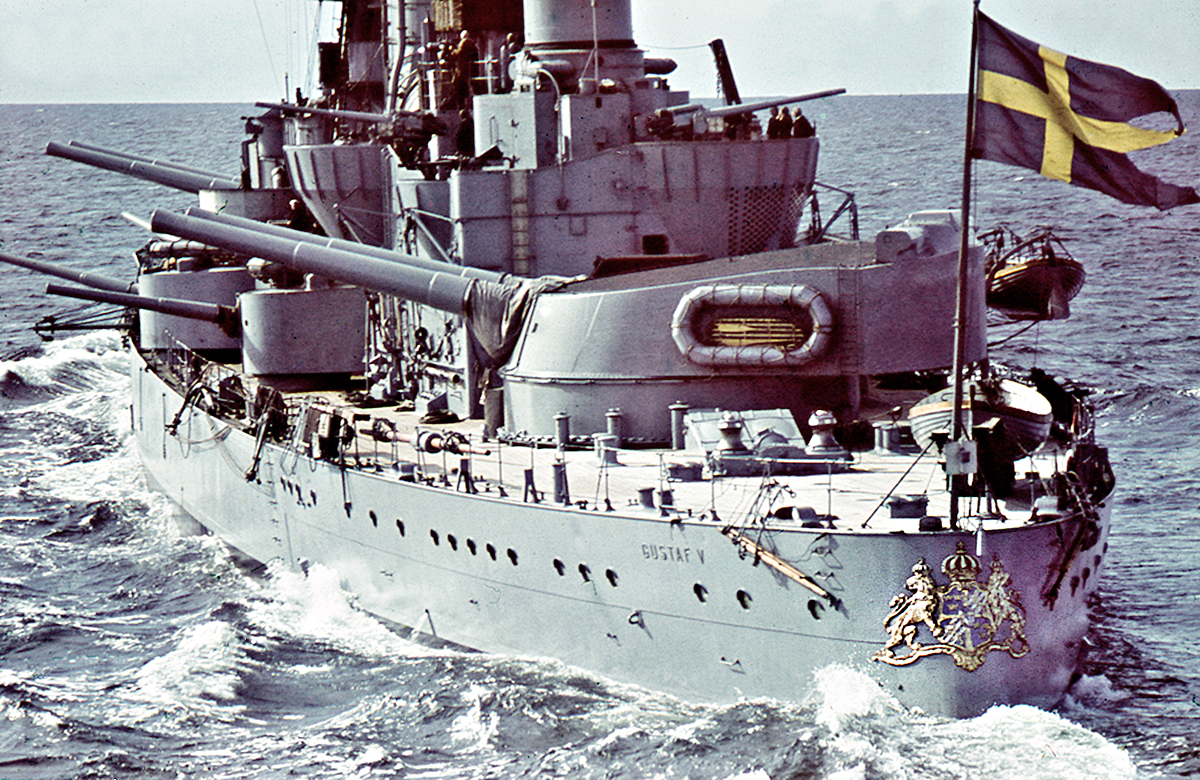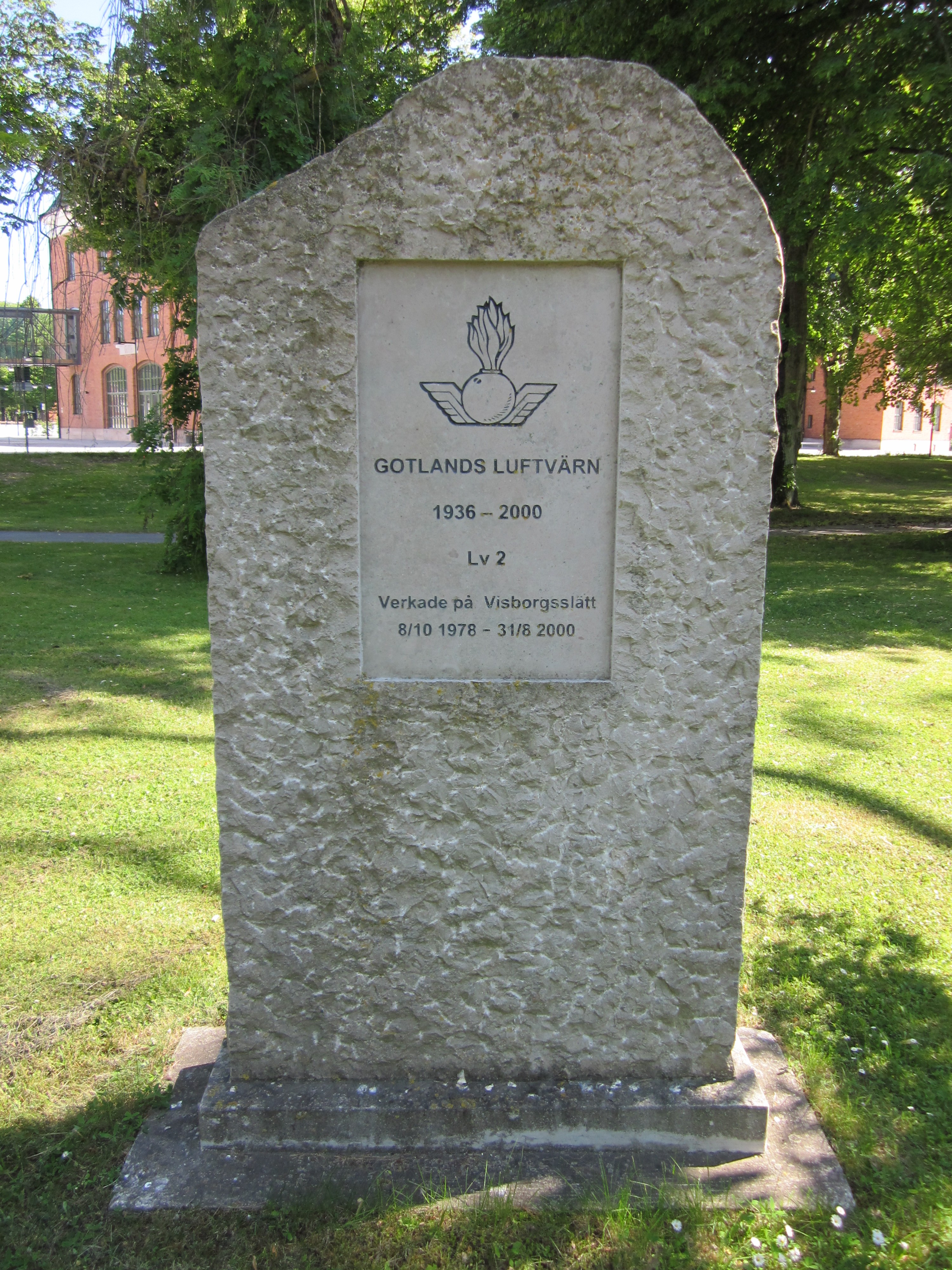|
Norrland Anti-Aircraft Battalion
Norrland Anti-Aircraft Battalion ( sv, Norrlands luftvﺣ۳rnsbataljon, Lvbat/I 19), originally Luleﺣ۴ Anti-Aircraft Corps ( sv, Luleﺣ۴ luftvﺣ۳rnskﺣ۴r, Lv 7) was a Swedish Army anti-aircraft unit that operated between 1942 and 2004. The unit was based in Luleﺣ۴ and Boden Garrison. History Through the Defence Act of 1936, the air defense was given a more independent role in the Swedish artillery, which among other things resulted in a number of anti-aircraft divisions being organized, where, among other things, a division was relocated to Luleﺣ۴. The division was raised as a preparedness division of Karlsborg Anti-Aircraft Artillery Regiment (A 9) on 1 October 1941 under the name Luleﺣ۴ Anti-Aircraft Division (A 9 L). Through the Defence Act of 1942, it was decided to separate the air defense from the artillery, to form its own corps. The change resulted, among other things, in the Luleﺣ۴ Anti-Aircraft Division being separated from Karlsborg Anti-Aircraft Artillery Regiment, and fo ... [...More Info...] [...Related Items...] OR: [Wikipedia] [Google] [Baidu] |
Swedish Armed Forces
The Swedish Armed Forces ( sv, Fﺣﭘrsvarsmakten, "the Defense Force") is the government agency that forms the armed forces of Sweden, tasked with the defense of the country as well as with promoting Sweden's wider interests, supporting international peacekeeping, and providing humanitarian aid. It consists of the Swedish Army, the Swedish Air Force and the Swedish Navy, as well as a military reserve force, the Home Guard. Since 1994, all Swedish military branches are organized within a single unified government agency, headed by the Supreme Commander, even though the individual services maintain their distinct identities. The Swedish Armed Forces is made up of 23,600 active personnel, 11,200 military reserves, 24,000 Home Guard and 5,200 conscripts (set to increase to 8,000 conscripts by 2024) as of 2022. Units of the Swedish Armed Forces are currently on deployment in several international operations either actively or as military observers, including Afghanistan as part o ... [...More Info...] [...Related Items...] OR: [Wikipedia] [Google] [Baidu] |
Riksdag
The Riksdag (, ; also sv, riksdagen or ''Sveriges riksdag'' ) is the legislature and the supreme decision-making body of Sweden. Since 1971, the Riksdag has been a unicameral legislature with 349 members (), elected proportionally and serving, since 1994, fixed four-year terms. The 2022 Swedish general election is the most recent general election. The constitutional mandates of the Riksdag are enumerated in the ''Instrument of Government'' (), and its internal workings are specified in greater detail in the Riksdag Act ().Instrument of Government as of 2012. Retrieved on 16 November 2012. [...More Info...] [...Related Items...] OR: [Wikipedia] [Google] [Baidu] |
Service Ribbon
A medal ribbon, service ribbon or ribbon bar is a small ribbon, mounted on a small metal bar equipped with an attaching device, which is generally issued for wear in place of a medal when it is not appropriate to wear the actual medal. Each country's government has its own rules on what ribbons can be worn in what circumstances and in which order. This is usually defined in an official document and is called "the order of precedence" or "the order of wearing." In some countries (particularly in North America and in Israel), some awards are "ribbon only," having no associated medal. Design According to the U.S. Defense Logistics Agency (DLA), the U.S. military's standard size for a ribbon bar is wide, tall, with a thickness of 0.8 mm. The service ribbon for a specific medal is usually identical to the suspension ribbon on the medal. For example, the suspension and service ribbon for the U.S. government's Purple Heart medal is purple with a white vertical stripe at eac ... [...More Info...] [...Related Items...] OR: [Wikipedia] [Google] [Baidu] |
Coat Of Arms Of Sweden
The coat of arms of the Kingdom of Sweden ( sv, Sveriges riksvapen) has a greater and a lesser version. Regulated usage The usage of the coats of arms is regulated by Swedish Law, Actbr>1970:498 which states (in unofficial translation) that "in commercial activities, the coats of arms, the flag or other official insignia of Sweden may not be used in a trademark or other insignias for products or services without proper authorisation. This includes any mark or text referring to the Swedish State which this can give the commercial mark a sign of official endorsement. This includes municipal coats of arms which are registered." Any representation consisting of three crowns ordered two above one are considered to be the lesser coat of arms, and its usage is therefore restricted by law 1970:498. Variants The arms of Sweden were first formally codified by law in 1908. This law also formally codifies the differences between the "greater" and "lesser" arms. The present law prescribi ... [...More Info...] [...Related Items...] OR: [Wikipedia] [Google] [Baidu] |
Blazon
In heraldry and heraldic vexillology, a blazon is a formal description of a coat of arms, flag or similar emblem, from which the reader can reconstruct the appropriate image. The verb ''to blazon'' means to create such a description. The visual depiction of a coat of arms or flag has traditionally had considerable latitude in design, but a verbal blazon specifies the essentially distinctive elements. A coat of arms or flag is therefore primarily defined not by a picture but rather by the wording of its blazon (though in modern usage flags are often additionally and more precisely defined using geometrical specifications). ''Blazon'' is also the specialized language in which a blazon is written, and, as a verb, the act of writing such a description. ''Blazonry'' is the art, craft or practice of creating a blazon. The language employed in ''blazonry'' has its own vocabulary, grammar and syntax, which becomes essential for comprehension when blazoning a complex coat of arms. Ot ... [...More Info...] [...Related Items...] OR: [Wikipedia] [Google] [Baidu] |
Brﺣ۳ndﺣﭘn
Brﺣ۳ndﺣﭘn is a locality situated in Luleﺣ۴ Municipality, Norrbotten County, Sweden with 287 inhabitants in 2010. It gives its name to the island and fishing village of Brﺣ۳ndﺣﭘskﺣ۳r in the outer Luleﺣ۴ archipelago The Luleﺣ۴ archipelago ( sv, Luleﺣ۴ Skﺣ۳rgﺣ۴rd or ''Lule Skﺣ۳rgﺣ۴rd'') is a group of Swedish islands in the north part of the Bay of Bothnia. They lie offshore from the city of Luleﺣ۴ and the mouth of the Lule River. A few of the islands have sma ..., which the people of Brﺣ۳ndﺣﭘn used as a base for fishing in the summer. References Populated places in Luleﺣ۴ Municipality Norrbotten {{Norrbotten-geo-stub ... [...More Info...] [...Related Items...] OR: [Wikipedia] [Google] [Baidu] |
Norrland Signal Battalion
The Norrland Signal Battalion ( sv, Norrlands signalbataljon), designated Signbat/I 19, originally Norrland Signal Corps ( sv, Norrlands signalkﺣ۴r), designated S 3, was a Swedish Army signal unit, one of the few new formations raised in the 20th century. It was disbanded in 2005. The unit was garrisoned in Norrbotten. History The unit has its origins in a 1915 detached company, Field Telegraph Corps' Detachment in Boden, of the Field Telegraph Corps that was garrisoned in Boden. The company gained the designation Ing 3 det (3rd Engineer Regiment, detachment). The detachment was incorporated into Boden Engineer Corps in 1925, but was split off and formed Boden Signal Company with designation S 1 B in 1937. The company was in 1954 upgraded to a separate battalion, and gained the designation S 3 (3rd Signal Regiment) in 1955. The battalion was renamed Norrland Signal Battalion soon after, and was upgraded to a regiment with the name Norrland Signal Regiment in 1987 but downgra ... [...More Info...] [...Related Items...] OR: [Wikipedia] [Google] [Baidu] |
Norrland Engineer Battalion
The Norrland Engineer Battalion ( sv, Norrlands ingenjﺣﭘrbataljon), designation Ingbat/I 19, originally Boden Engineer Regiment ( sv, Bodens ingenjﺣﭘrkﺣ۴r), designation Ing 3, was a Swedish Army engineer unit, one of the few new formations raised in the 20th century. It was disbanded in 2005. The unit was garrisoned in Boden, Sweden. History The unit has its origins in the engineer companies created at Norrbotten Regiment in 1902. These companies became independent in 1904 as Boden Engineer Corps and gained the designation Ing 4 (4th Engineer Regiment). Boden Engineer Corps gained the new designation Ing 3 in 1937 and was upgraded to a regiment in 1975 and was renamed Boden Engineer Regiment. It was then downgraded to a battalion unit again in 1994, and was renamed Norrland Engineer Corps. In 2000, the battalion became one of five battalions in Norrbotten Regiment, with the name Norrland Engineer Battalion, the designation Ing 3 was not kept, even though it was still in common ... [...More Info...] [...Related Items...] OR: [Wikipedia] [Google] [Baidu] |
Air Defence Regiment (Sweden)
The Air Defence Regiment ( sv, Luftvﺣ۳rnsregementet, Lv 6), is the only anti-aircraft regiment in the Swedish Armed Forces. Its new organisation was introduced in 2000, when all other anti-aircraft units in Sweden were disbanded. The regiment is located in Halmstad and has the responsibility for training two air defence battalions and one home guard battalion. History Through the Defence Act of 1936, the air defense was given a more independent role in the Swedish artillery, which among other things resulted in a number of air defense divisions being organized, where, among other things, a division was relocated to Gothenburg. The division was raised as a preparedness division of Karlsborg Anti-Aircraft Artillery Regiment (A 9) on 1 October 1941 under the name Gothenburg Anti-Aircraft Division (A 9 G). Through the Defence Act of 1942, it was decided to separate the air defense from the artillery to form its own branch. The change resulted, among other things, in the Gothenburg A ... [...More Info...] [...Related Items...] OR: [Wikipedia] [Google] [Baidu] |
Halmstad
Halmstad () is a port, university, industrial and recreational city A city is a human settlement of notable size.Goodall, B. (1987) ''The Penguin Dictionary of Human Geography''. London: Penguin.Kuper, A. and Kuper, J., eds (1996) ''The Social Science Encyclopedia''. 2nd edition. London: Routledge. It can be def ... at the mouth of the Nissan (river), Nissan river, in the provinces of Sweden, province of Halland on the Sweden, Swedish west coast. Halmstad is the seat of Halmstad Municipality and the capital of Halland County. The city had a population of 70,480 in 2019, out of a municipal total of over 100,000 (19th most populous ﻗ 2019). Halmstad is Sweden's 19th-largest city by population and located about midway between Gothenburg (the second most populous) and Malmﺣﭘ (the third). Timber framing architecture is common. History Halmstad, at the time part of the Kingdom of Denmark, received its first city charter in 1307, and the city celebrated its 700th anniversary in 20 ... [...More Info...] [...Related Items...] OR: [Wikipedia] [Google] [Baidu] |
Gotland Anti-Aircraft Corps
Gotland Anti-Aircraft Corps ( sv, Gotlands luftvﺣ۳rnskﺣ۴r), also Lv 2, was a Swedish Army anti-aircraft unit that was active in various forms between 1944ﻗ2000. The unit was based in Visby on Gotland. History Gotland's air defence has its origins in the Stockholm Anti-Aircraft Regiment's (Lv 3) artillery battery detachment on Gotland (Lv 3 G), established in 1944. When Stockholm Anti-Aircraft Regiment moved to Norrtﺣ۳lje in 1953, the responsibility for the artillery battery on Gotland was transferred to ﺣstgﺣﭘta Anti-Aircraft Regiment (Lv 2) in Linkﺣﭘping and thus the unit received the designation Lv 2 G. ﺣstgﺣﭘta Anti-Aircraft Regiment was disbanded in 1962. Lv 2 G took over its ensign and traditions on 2 April. On 1 April 1963, Lv 2 G became the new Lv 2. On 1 July 1968, the term "division" was changed to battalion. Lv 2 was then named Royal Gotland Anti-Aircraft Battalion. In 1969, the battalion received the heat-seeking anti-aircraft missile FIM-43 Redeye and could begin t ... [...More Info...] [...Related Items...] OR: [Wikipedia] [Google] [Baidu] |


